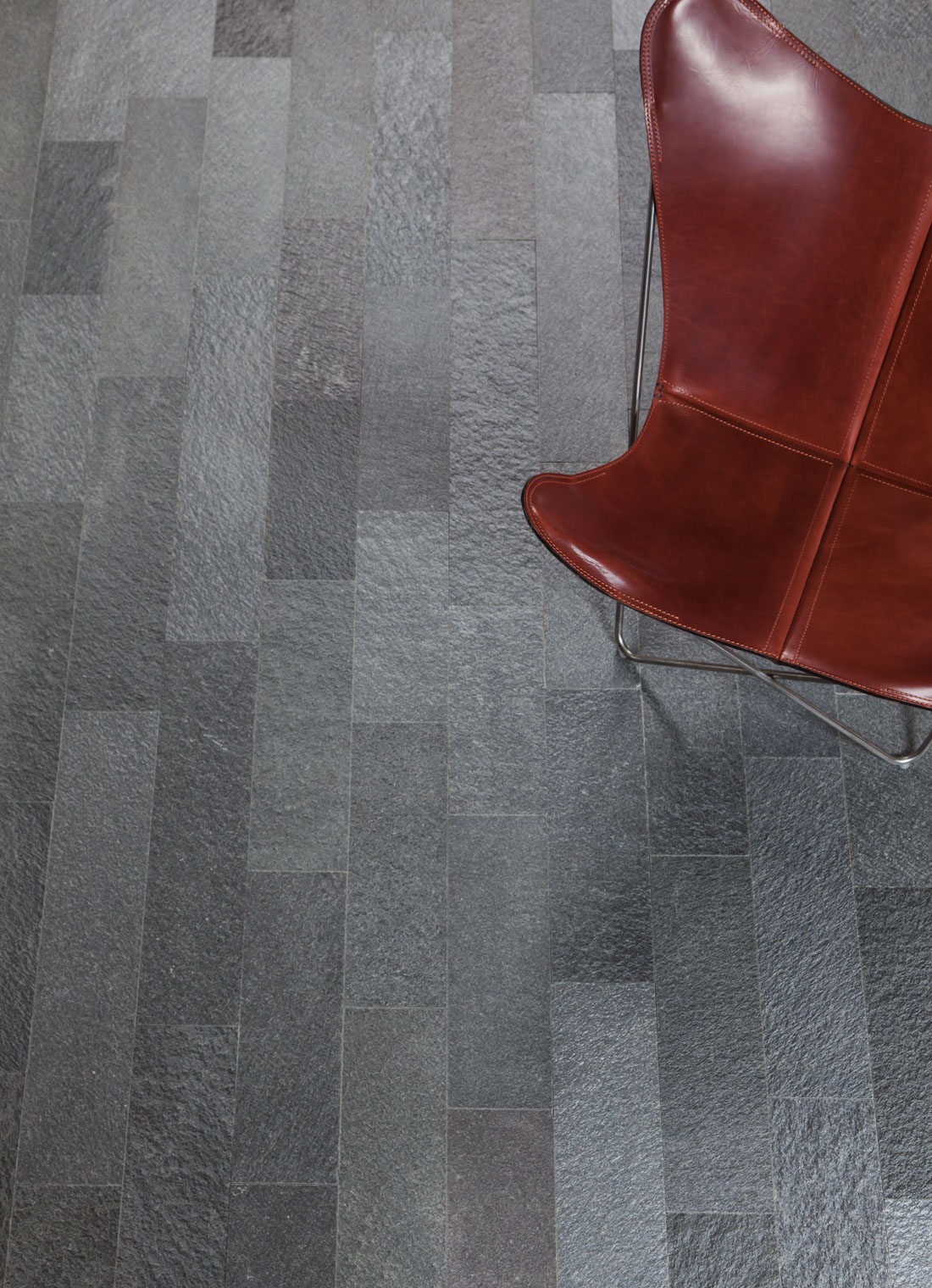Tips for gluing slate – indoors and outdoors!

Slate tiles can be laid on interior floors and walls, or outdoors on a pre-cast underlay, using a special glue-mortar designed for natural stone. Slate can also be laid as paving stones on gravel or sand.
There is great variation in the properties of various types of glue, grouting, sealants, etc.
Make sure you choose products that are specially developed for natural stone, whether you are laying the slate yourself or hire a professional.
Ask your supplier for advice! Many of them have extensive experience from working with Scandinavian slate and may have developed their own laying instructions specifically for our slate.
In wetrooms, and especially in bathrooms with showers installed directly on the floor, it is particularly important to ensure that there is a good drop for water to run off to the drain, so that the water doesn’t leave a pool on the surface or permeate the underlayer.
NB: This also applies to the drop of the actual underlayer – not just on the surface.
Water can penetrate joins and if the drop to the drain in the underlayer is inadequate, water can gather on the membrane and begin to flow away from the drain in the concrete layer.
Moisture can accumulate over time until it is either pressed up or dries up as steam or condensation. This can lead to moisture penetration of the slate, causing stains and discolouration.
By making sure you cover the whole of the reverse side of the tile, you will avoid cavities (gaps) that allow moisture seepage and the possibility of discolouration.
We therefore recommend that the slate is “double glued” – in other words, the glue is applied to both the surface to be tiled and the underside of the tile.
In principle, the same rules apply both indoors and outdoors. Avoid all risks of water accumulating. In this respect the underlayer is just as important as the surface.
Check the ground conditions and possible sources of moisture incursion, also outdoors.
Good groundwork will ensure good drainage that leads any accumulated moisture away from the slate.

Like other natural materials such as wood, slate used outdoors will change character over time. Heat, light and moisture leave a patina which emphasises how slate is a natural material.
Slate ages with dignity and the ageing process does not affect its strength and technical qualities. It will last forever.